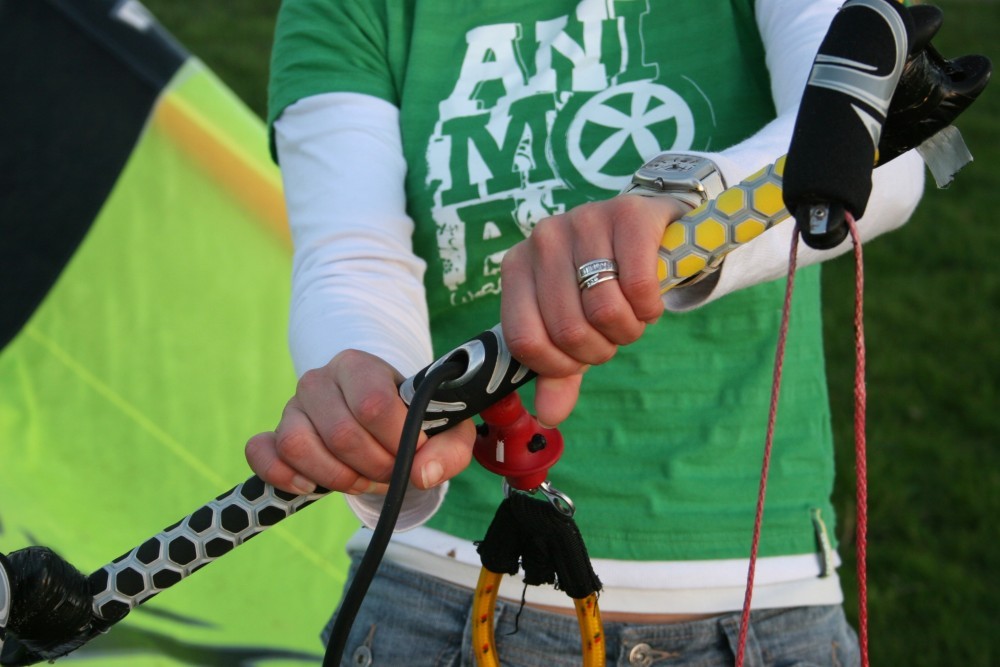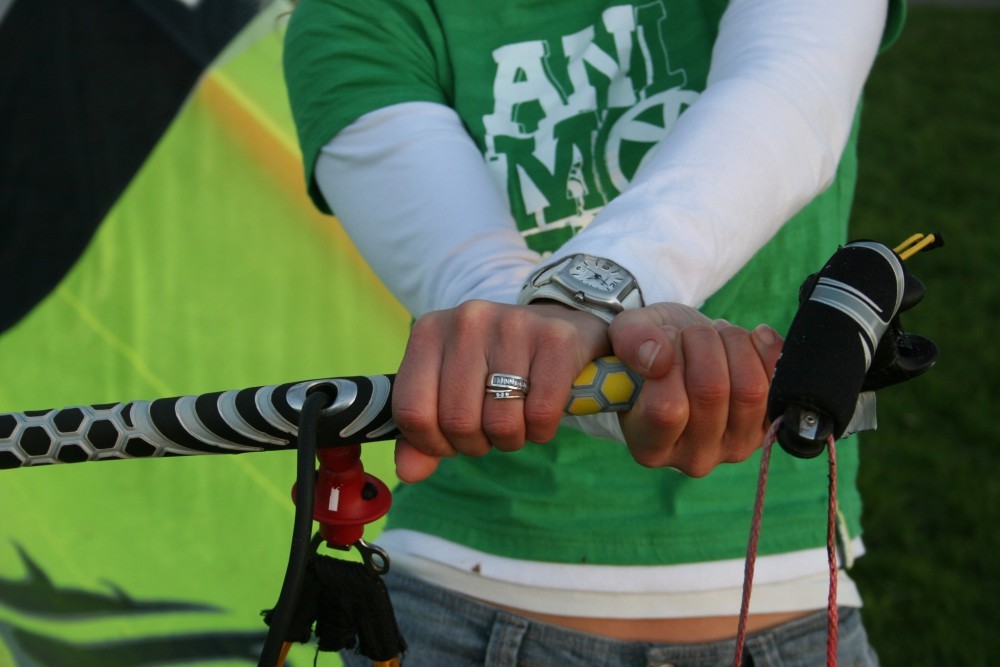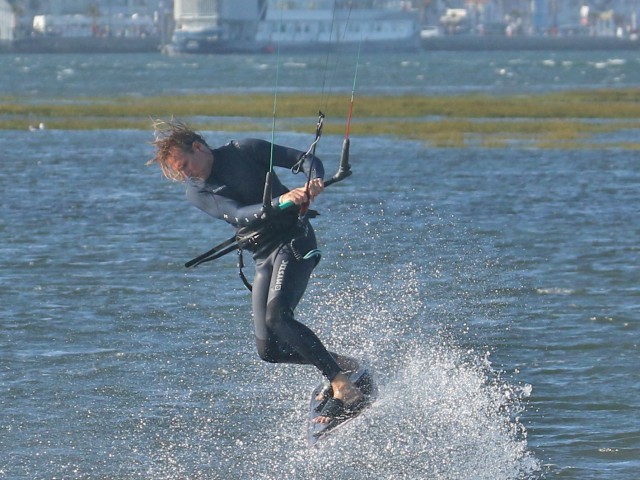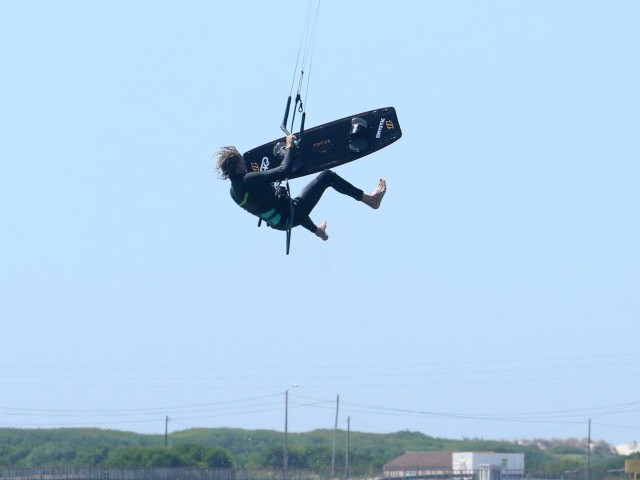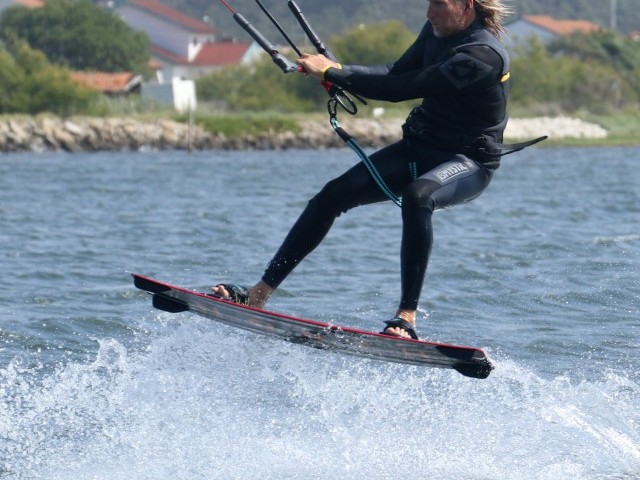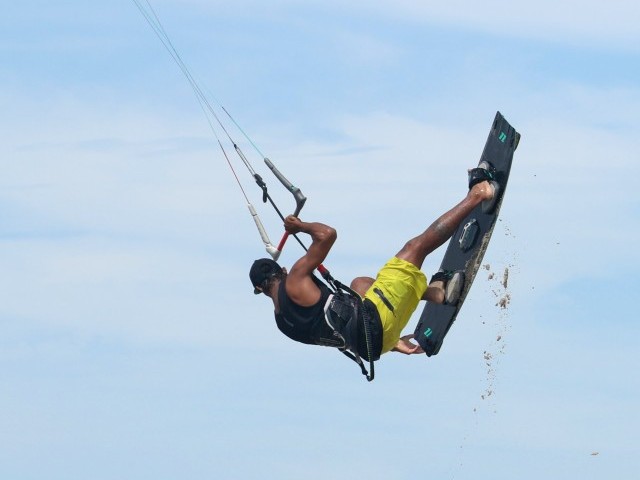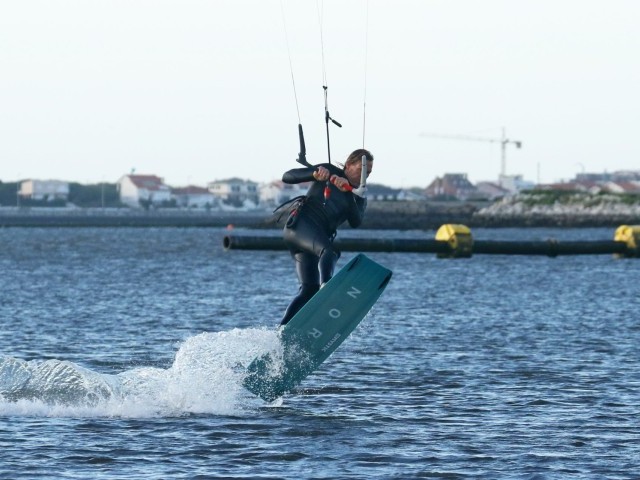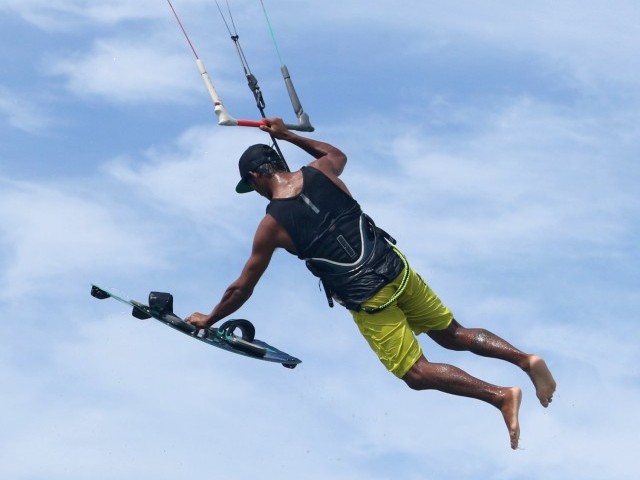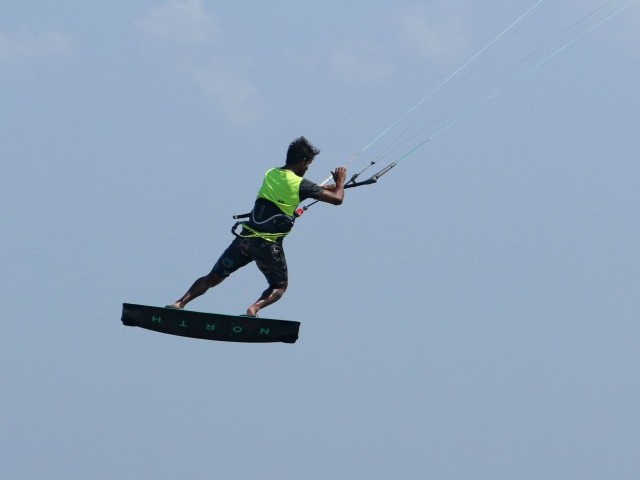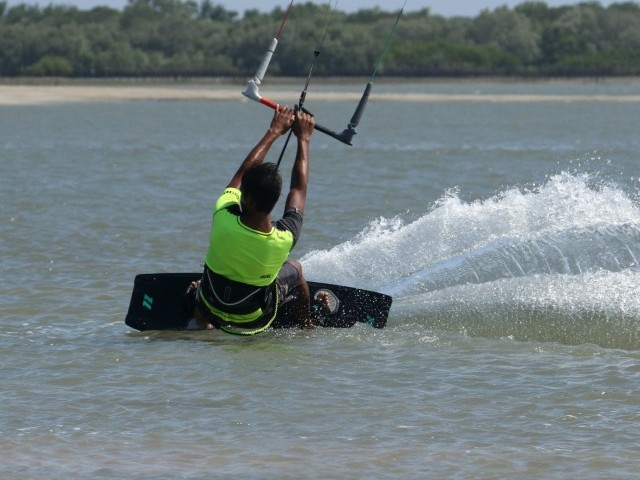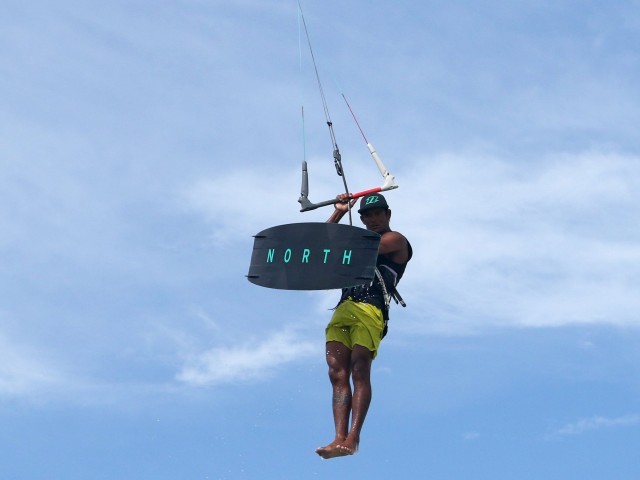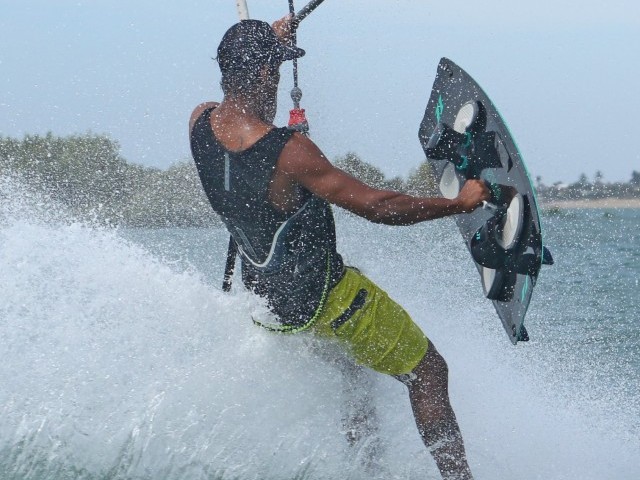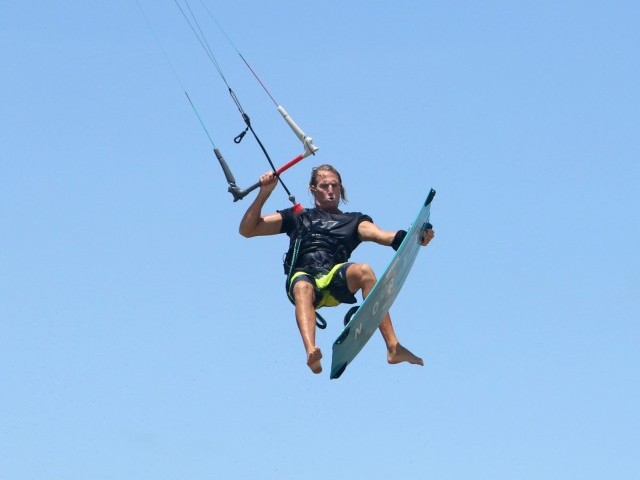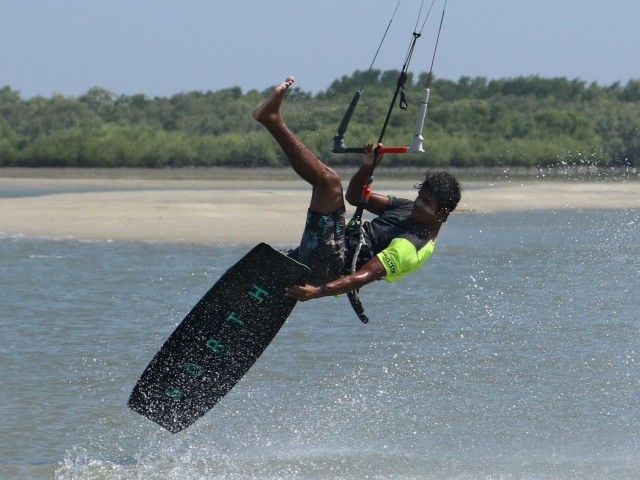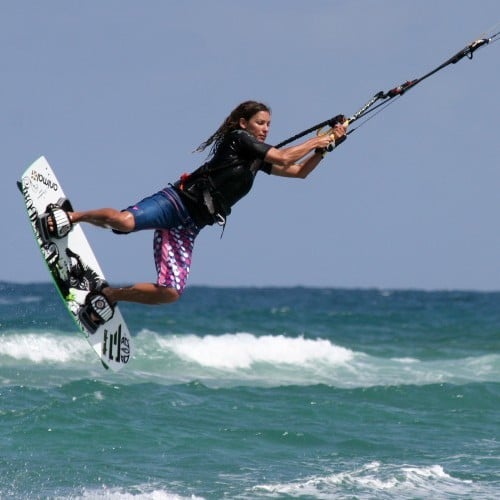
Unhooked Kite Loop
Technique / Advanced
Introduction
Learning a unhooked kite loop has all the advantages of it’s hooked in cousin, but far fewer of the disadvantages. Performed powered it looks great and feels amazing, and yet in the novice stages you always have the option of letting go and reducing velocity and the subsequent impact. And that’s not all, we’ll be looking at it with a toe side landing, which not only adds a touch of spice, but also gets the more enthusiastic kiter prepared for the likes of a wrapped landing and then a full blown air pass. However like all moves, best forget the grandeur of Hadlow and concentrate on how you’re going to learn it initially.
The Plan
Time for a brief perusal of what you’ll need to be doing. For an unhooked kite loop you’ll need a well-trimmed kite that you are able to unhook from. You’ll need a committed head, lots of space and the ability to pop at will. Essentially what you will do is fish pole your bar whilst sailing along and then hop up off the water. Eureka. To start with you wont be wanting much power, just to get the idea as in Video 1.
Unhooking
Although you’ll be detaching yourself from your chicken loop, kite loops (and downloops) differ from most other unhooked tricks because you’ll be unhooking with the kite above you at 12 o’clock or thereabouts. This raises a few issues concerning the unhooking process. With the kite flying in the heavens, the lift it is generating will be pulling the bar and your harness hook up, making unhooking that little bit more complicated.
To counteract this you have three combined solutions. Firstly make sure that you’ve trimmed the sweet spot of you bar down so that it’s lovingly close to the chicken loop. This way when you heave down to unhook yourself the kite will not flare, drop back and pull a bit harder. In lighter winds when you are learning, if you refuse to trim the front lines your kite will fall out of the sky backwards when you land. Secondly chase your kite downwind. If you suddenly release your edge and turn off down wind you will be rewarded with a moment when your lines will not be pulling like wild horses. Thirdly, when you unhook keep your shoulders back. If you look down with your head, the shoulders roll forward and as a result your bum and the harness hook move back, so love that bar!
Handy Work
Once you’ve unhooked you’ll be wanting to change the way in which you hold the bar. In truth you could do with your normal grip, but it’ll make the timing, commitment and ultimately the landing more difficult. Once again it’s over to JR Hartley and his fly fishing posse. If you look at Pic A you can see that Karine is holding the bar as normal. She is intending to loop the kite behind her whilst riding to her right. To get the kite moving fast to the left she is going to very quickly let go with her front (right) hand (great idea we know), and reach underneath her back hand with her palm facing up, and grab the bar just behind her back hand as in Pic B. You won’t need to worry about the actual bar position, as the kite pulls it into fishing mode, but try to hold on tight and keep it as close to your hips as you can.
Le Pop
Now it’s all well and good edging like a dervish against a looping kite, and no doubt there are a few beefy ones among you who could hold it, but that’s not the object guys (ladies your excused, far too bright to try something so Neanderthal). You’re searching for pop so the idea is to get back on an edge in a strong ready to pop stance. Try to get your shoulders back, the board in between you and the kite, you bum low to resist the lift, your front leg straight to keep the board on its edge and your hips over your back foot and a coiled back leg ready for take-off. From this position you can choose when to go. Experiment with timing, bearing in mind that going early is preferable to going late. Think about swapping your hands, edging and then popping – don’t worry about the kite, your hands will have set it in motion.
Pulling Power
A looping kite travelling against the direction in which you are travelling is more than likely to generate a bit of oomph. However, contrary to armchair physics, the slower you are going the harder the yank will seem. This is a good thing considering that you’ll be needing a bit of speed to get some pop. If you pop early enough there will be a moment of peace, the calm before the storm, in which you should prepare yourself for the pull. Your aim is to set your body up in anticipation so that you don’t get caught off balance. If you’ve never done this before you’d be guessing. During a kite loop the pull will come from slightly behind of down wind Pic C. When you take off and start to feel a pull look over your hands, and your rear elbow, this should set you up for the yank and the landing to follow.
Touching Base
Landing one of these beauties is all about following the pull and getting your undercarriage down. You will be landing dead down wind or even facing ever so slightly back from whence you came. As the kite loops round, and especially if it starts going round for a 2nd time it will pull you back. Getting your feet underneath you requires you to pull the bar in towards your hips, and then they’ll swing down obediently. To help balance the landing to toe side take your front hand, the one you placed underneath the bar, off. The final word of advice would be to ignore what the kite is doing until you stick the landing.
More Handy Work
Once you’re confident that you’ve stayed on your feet it’s time to gather in your possessed kite. If you did release your front hand, then you know that the hand holding the bar is in its correct and favoured position. This is a much preferred option to that of trying to work out what’s going on whilst you follow a looping kite down wind. Wait until you see or feel that the kite is on its way up before grabbing hold of the free side of the bar with your free hand. From here you can then decide which way you plan to carve out.
Warning
Trying this for the first time in light to moderate breezes is very unlikely to result in any form of pain to you. However if you are kiting behind or being dragged by a looping kite after landing of falling, every other kiter in your vicinity is a potential victim, so find some space and don’t do this near the beach in an onshore wind. OK that’s the Mother and Father bit over.
Following Sequence 1
- Pic 1. Karine has had a good butchers around and is convinced nobody is around. She has drifted the kite up towards 12 o’clock and has stood up slightly to release her edge.
- Pic 2. With the board now flat she pulls her hands down towards her hips.
- Pic 3. And then pushes them away. Now unhooked she moves her hips over her back foot and extends her front leg.
- Pic 4. She releases her front (right) hand and places it underneath her back hand and grabs the bar a la fish pole, chocks away.
- Pics 5 & 6. She now pretty much forgets about the kite and drops back onto her edge, getting her weight low and carving the board hard back up wind.
- Pic 7. Karine bends her back leg and is ready to pop. Time for her kite face.
- Pic 8. She now explodes up off the water by violently straightening her back leg, as she feels the kite start to pull.
Following Sequence 2
- Pic 1. As Karine extends off the water the kite takes her up and stretches her out.
- Pic 2. As the kite accelerates around its loop Karine is pulled towards the kite, which is slightly behind her direction of travel.
- Pic 3. Karine now knows where she’ll land, so she goes with the pull of the kite and looks over her hands.
- Pic 4. As the kite starts to rise Karine’s feet swing down. To help get them underneath her and regain her balance Karine pulls the bar in towards her hips.
- Pic 5. Karine drops as the lines loosen (a result of her catching the kite up after the yank). Because she has been pulled back she releases her front (right) hand to keep balanced.
- Pic 6. Ready for landing Karine extends her legs so that she can absorb the landing and gets the board in front of her to land tail first.
- Pic 7. On impact Karine looks up and forward to steady herself. With the board facing downwind it wouldn’t matter if the kite looped again.
- Pic 8. With the kite still on the way up Karine reaches for the empty side of the bar with her free hand and sails away. Orea.
Top Tips
If you have a fifth line use it to attach your leash to. If you have a bow style kite that de-powers from the chicken loop make sure that you don’t have the stopper fixed in place. For learning this we really don’t recommend using a suicide leash (read the name).
Pop off the water before you think it’s time. This will give you more chance of landing as you’ll be able to keep the bar nearer, and it’ll be a lot kinder on your back.
Should you happen to fall and still be holding the bar on one side with two hands, wait until you see the kite turning back up before you release the bar. No crashing hard into the deck necessary.
Try on both sides, and you’ll probably find that regardless of direction you will always land with your strong foot forward.
The better you get, the more powered can try this.
This technique article was in Issue 8 of IKSURFMAG.
Related
By Christian and Karine
Christian and Karine have been working together as a coaching team, running improver to advanced kitesurfing clinics since 2003.







